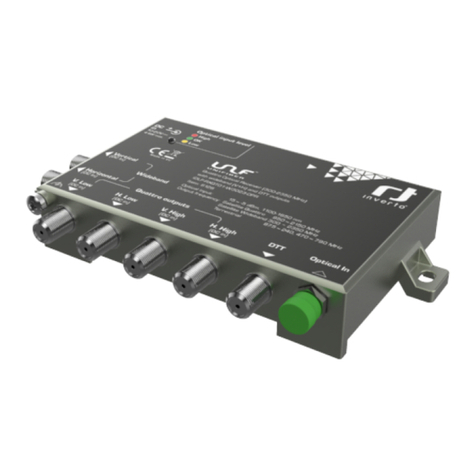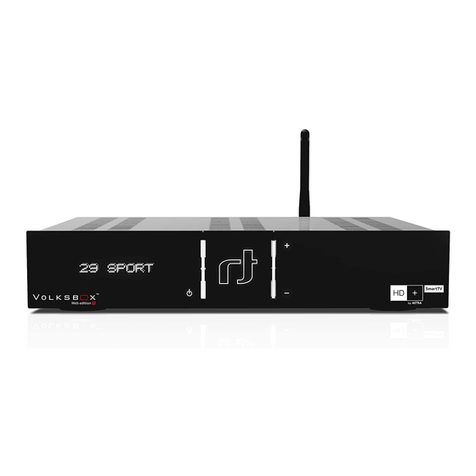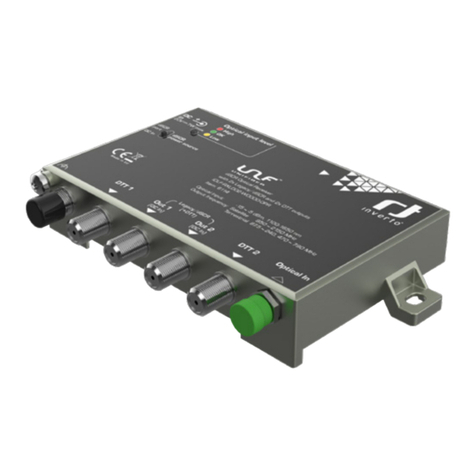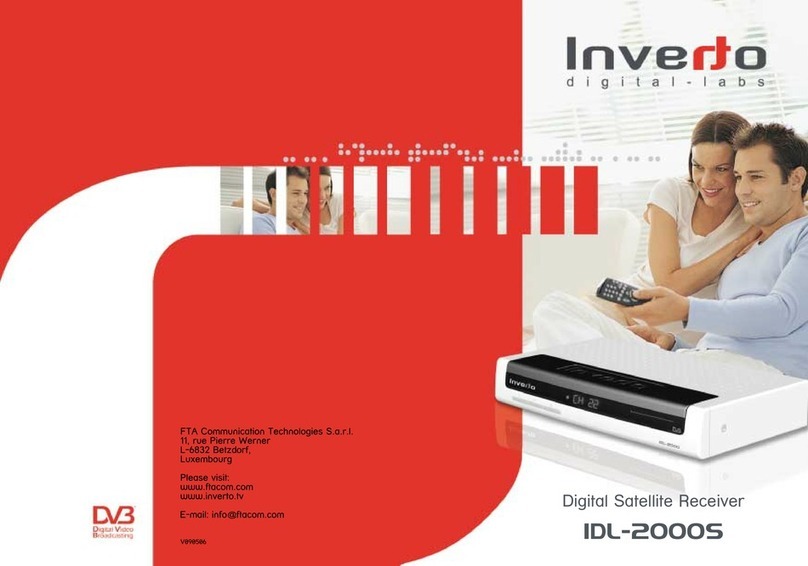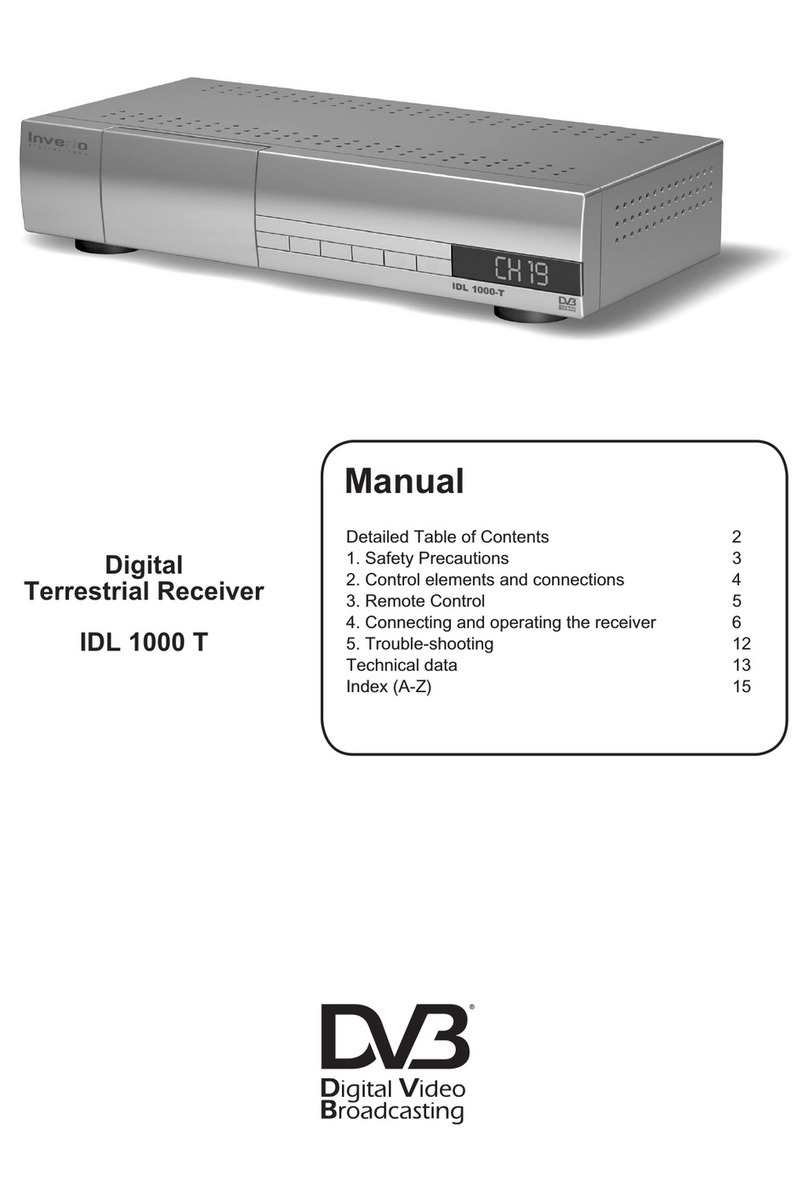
FTA Communication Technologies S.á r.l Tel. +352 264 367 1 Fax. +352 264 313 68
17 Route de Luxembourg, Gonderange, L-6182, Luxembourg 9
WEEE-Hinweis
Der Umweltschutz ist ein wichtiges Ziel unseres Unternehmens. Der durchgestrichene Abfallbehälter bedeutet, dass dieses Produkt nach dem
Auslaufen aus dem Haushalt nicht als Abfall entsorgt werden darf, sondern an einem speziellen Ort entsorgt werden muss. Wir informieren Sie
hiermit darüber, dass der Hauptzweck der europäischen Verordnung und des Gesetzes vom 11. September 2015 über Elektro- und Elektronik-
Altgeräte darin besteht, die Menge des aus den Geräten entstehenden Abfalls zu begrenzen, ein angemessenes Niveau der Sammlung,
Rückgewinnung und des Recyclings von Altgeräten zu gewährleisten und das öentliche Bewusstsein für die Schädlichkeit dieser Geräte für die
natürliche Umwelt in jeder Phase ihrer Nutzung zu erhöhen. Gemäß Art. 36 des Gesetzes ist der Benutzer von Geräten, die für Haushalte bestimmt
sind, verpichtet, die gebrauchten Geräte an die Sammelstelle für Altgeräte oder an die autorisierte Stelle zum Sammeln zurückzugeben gemäß
Abschnitt 45 Artikel 1, Punkt 1 des Gesetzes vom 14. Dezember 2012 über Abfälle. In diesem Zusammenhang ist darauf hinzuweisen, dass den Haushalten in
dem oben genannten Prozess eine sehr wichtige Rolle zukommt. Es sollte jedoch daran erinnert werden, dass Produkte, die zur Gruppe der elektrischen oder
elektronischen Geräte gehören, auf die richtige Art und Weise und an den richtigen Orten entsorgt werden sollen. Informationen über lokale Sammelstellen
(Lagerort, Sammelstelle usw.) können von den lokalen Behörden oder dem Vertreiber zur Verfügung gestellt werden. Gleichzeitig ist hervorzuheben, dass
die Vertreiber verpichtet sind, Altgeräte aus Haushalten an der Verkaufsstelle kostenlos zurückzunehmen, vorausgesetzt, dass die Altgeräte vom gleichen
Typ sind und die gleichen Funktionen erfüllen wie die verkauften Geräte. Darüber hinaus ist der Vertreiber, der dem Käufer für den Haushalt bestimmte
Geräte zur Verfügung stellt, verpichtet, gebrauchte Geräte aus den Haushalten am Lieferort dieser Geräte kostenlos zurückzunehmen, sofern die Altgeräte
vom gleichen Typ sind und dieselben Funktionen erfüllen wie die gelieferten Geräte. Auf diese Weise können Sie sich am Prozess der Wiederverwendung
von Rohstoen und der Unterstützung des Programms zur Entsorgung von Elektro- und Elektronikabfällen beteiligen, die sich auf die Umwelt und die
öentliche Gesundheit auswirken können. Es ist zu bedenken, dass die korrekte Entsorgung von Geräten es ermöglicht, wertvolle Ressourcen zu sparen
und negative Auswirkungen auf Gesundheit und Umwelt zu vermeiden, die durch unsachgemäßen Umgang mit Abfall und gefährlichen Komponenten
bedroht sein können.
Importeur
FTA Communication Technologies S.à r.l
17 Route de Luxembourg, Gonderange L-6182
Luxembourg
De
FTA Communication Technologies S.á r.l Tel. +352 264 367 1 Fax. +352 264 313 68
17 Route de Luxembourg, Gonderange, L-6182, Luxembourg
